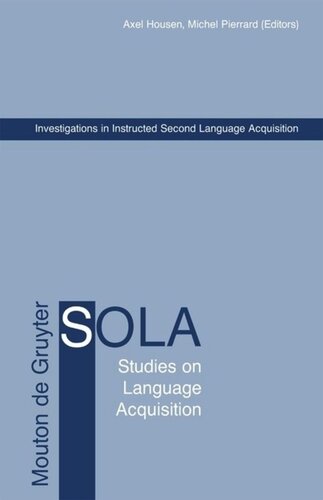

Most ebook files are in PDF format, so you can easily read them using various software such as Foxit Reader or directly on the Google Chrome browser.
Some ebook files are released by publishers in other formats such as .awz, .mobi, .epub, .fb2, etc. You may need to install specific software to read these formats on mobile/PC, such as Calibre.
Please read the tutorial at this link: https://ebookbell.com/faq
We offer FREE conversion to the popular formats you request; however, this may take some time. Therefore, right after payment, please email us, and we will try to provide the service as quickly as possible.
For some exceptional file formats or broken links (if any), please refrain from opening any disputes. Instead, email us first, and we will try to assist within a maximum of 6 hours.
EbookBell Team

5.0
90 reviewsMethods in current instructed second language acquisition research range from laboratory experiments to ethnography using non-obtrusive participant observation, from cross-sectional designs to longitudinal case studies. Many different types of data serve as the basis for analysis, including reaction times measurements, global test scores, paper and pencil measures, introspective comments, grammaticality judgements, as well as textual data (elicited or naturalistic, oral or written, relating to comprehension or production). Some studies rely on extensive quantification of data, while others may favour a more qualitative and hermeneutic analytic approach.
Many of these issues and methods are exemplified by the contributions to this volume. Data-based studies included here deal with the acquisition of specific linguistic phenomena (e.g. verb and noun morphology, lexicon, clause structures) in a range of target languages (e.g. English, French, German, Russian) from a variety of settings involving different instructional approaches (e.g. traditional foreign language classes, immersion classes, intensive ESL classes, content and language integrated language classes). Collectively, the chapters in this book illustrate the productivity and diversity of current research on instructed second language acquisition. As such they serve as a valuable resource for researchers in SLA, psycholinguistics, linguistics, and language education.